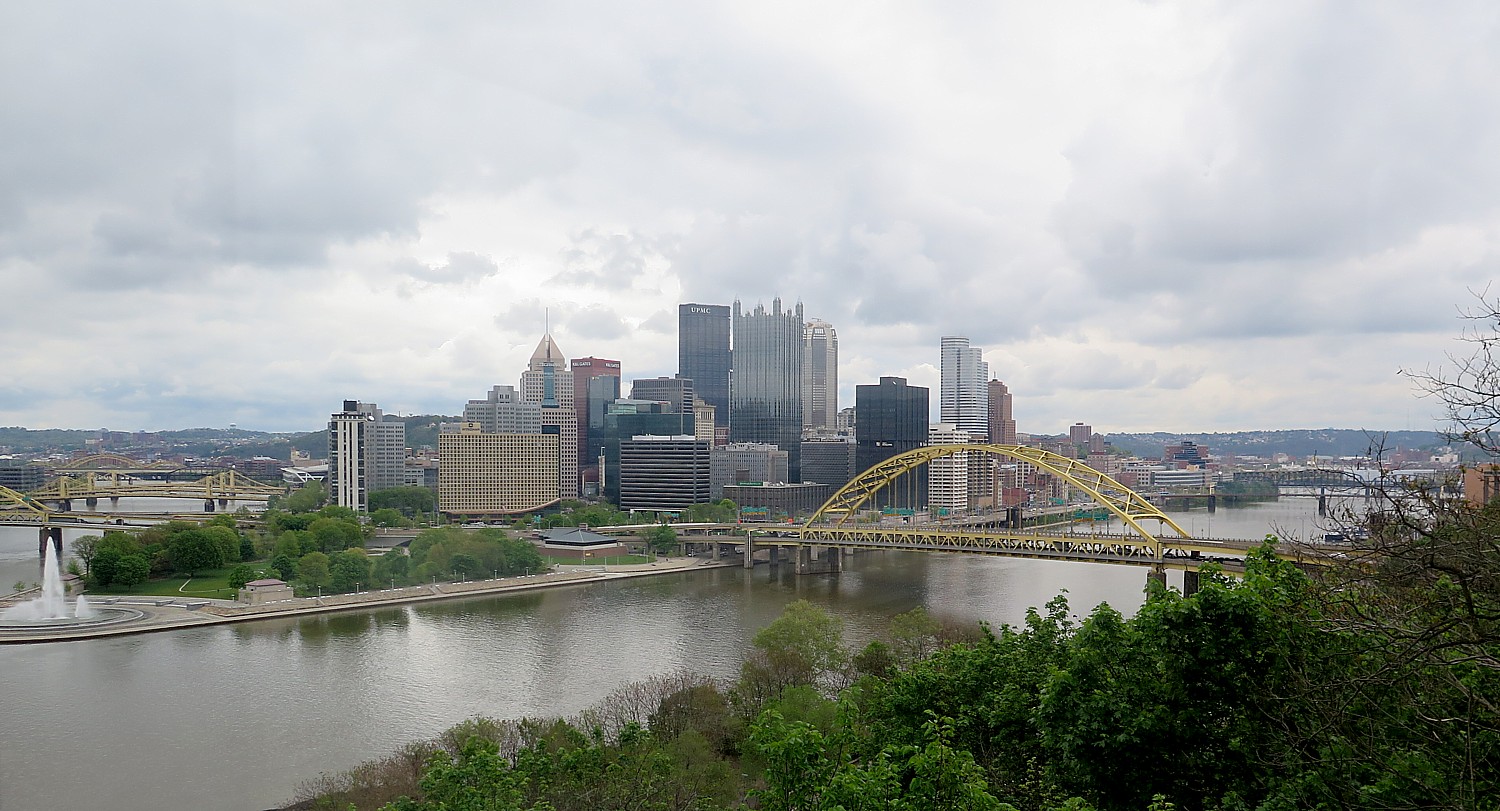
By Karen Rubin, Travel Features Syndicate, goingplacesfarandnear.com
Pittsburgh was at the crossroads, commanding a literal pivotal position in the struggle for control of New World colonies by France and England – the Keystone of the Frontier. George Washington surveyed from a point now known as Mount Washington and picked the location for what became known as Fort Pitt, for who controlled this confluence of the rivers, would control the Colonial empire. Meriwether Lewis embarked on his historic westward Lewis & Clark Expedition from Pittsburgh.
The city grew and prospered and was blighted under the control of Industrial titans like Andrew Carnegie and Henry Clay Frick whose steel mills controlled almost one-third of US output that built America’s infrastructure and turned the nation into an economic world power.
Most of those steel mills, the coal mines, the rail lines, the glass factories are shuttered, and the city went through a dismal time. But today, the city has been reborn.
One of the best reasons to visit Pittsburgh is to see how a city reclaims itself, how it can rise like a phoenix quite literally from ashes and turn itself into a city that embraces and nurtures its people.
The most fascinating discovery about Pittsburgh is how a city built for commerce and industry, built upon steel and machines, has become such a walkable, bikeable, liveable place – from grey to green.
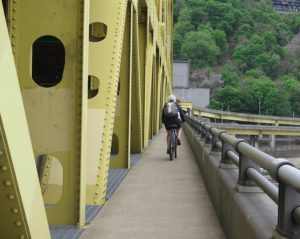
You still see coal on barges on the river, railroads carrying freight on the bank below Mount Washington, the skyscrapers housing US Steel Corporation and the United Steelworkers Union, but you can actually see the city from Grandview Avenue, where once, the smokestacks would billow such thick particulates as to choke the city.
There is such richness in culture and heritage that abounds here, but the best reason to visit is to feel the vibe.
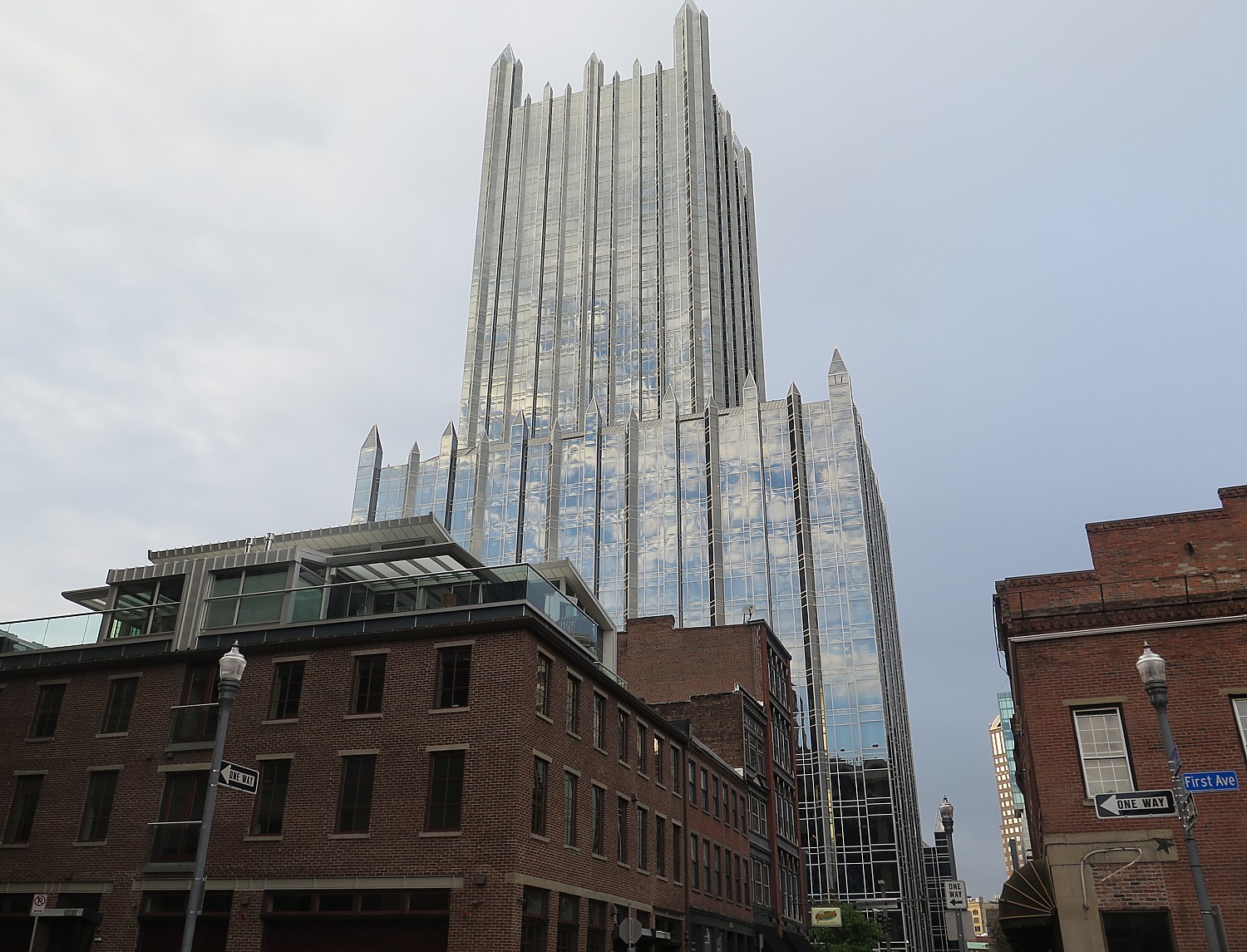
You feel it as you walk about, going from neighborhood to neighborhood, taking in the stunning juxtaposition of centuries-old architecture against modern structures. Pittsburgh is becoming an example of a “best of both worlds”, though old and new doesn’t necessarily mesh seamlessly, but rather with an exciting creative tension.
I have come to Pittsburgh to join the Rails-to-Trails Conservancy’s Sojourn three-day, 120-mile bike tour on the Great Allegheny Passage – a trail reclaimed from a former rail line that was used to carry the coal from the mines to the steel mills. It is the foremost example of the transition of an economy and the society that it supports. But I only have one full day, so I want my time to be as productive as possible.
And as authentic as possible, so I choose the historic Omni William Penn Hotel – a member of Historic Hotels of America – which celebrated its centennial in 2016 the same year as the city celebrated its bicentennial.
I start with the hotel’s concierge to get some ideas of how to organize my day in order to pack enough highlights that give me a real sense of this place – the things that are unique to the city.
She, in fact, epitomizes the story of Pittsburgh:
You see, her father worked in those steel mills of Andrew Carnegie and Frick, suffering the intense heat of a firey hell. There used to be steel mills lining the riverfront. She remembers how the pollution in the city was so thick, that you could not see the city below Grandview Avenue on Mount Washington ridge where I will be heading soon to take in the view. Her father died at an early age.
Today, the city’s main industries include academia, robotics, banking and finance and his daughter is now a concierge in a luxury hotel.
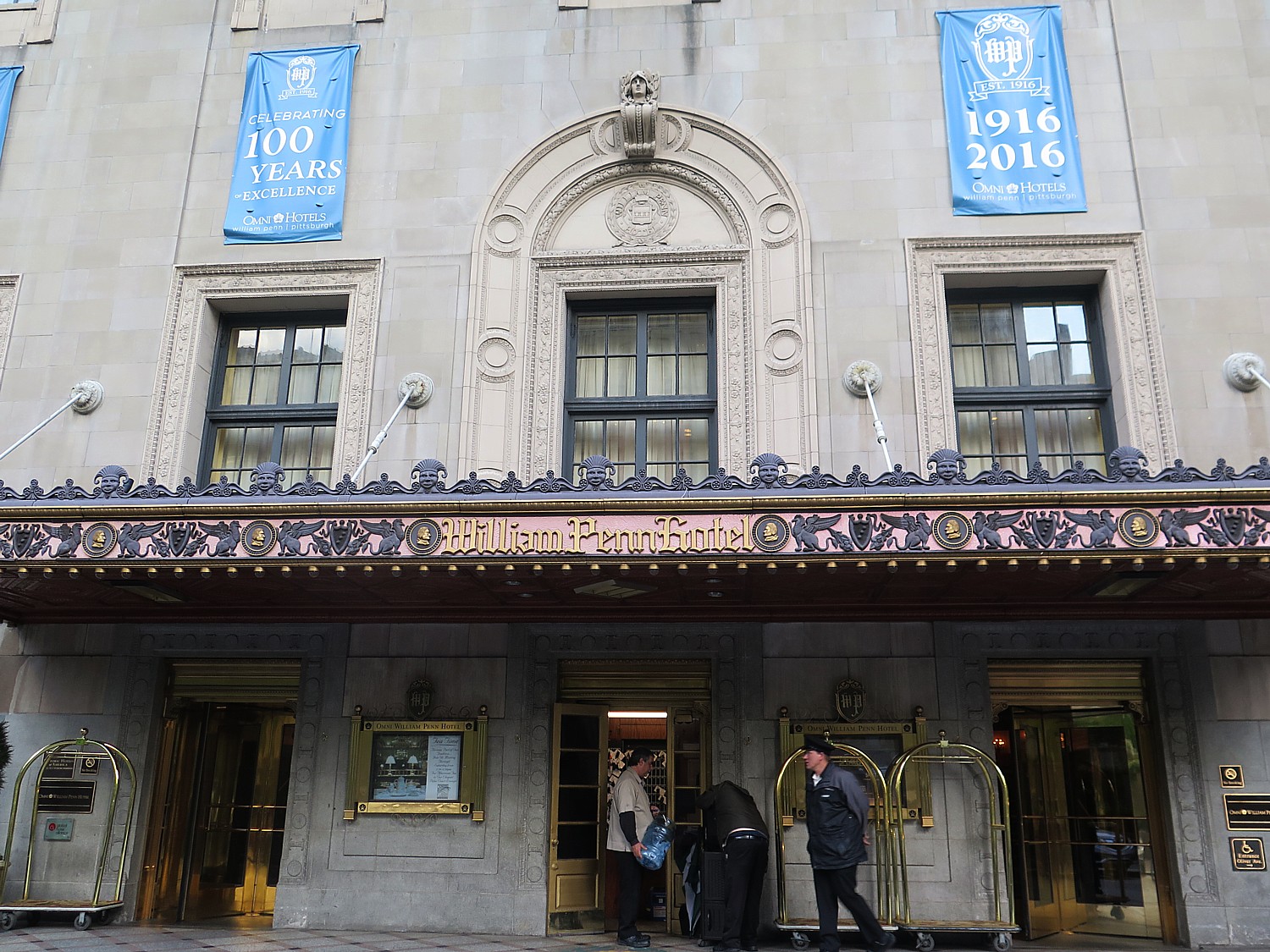
At its bicentennial in 2016, Pittsburgh boasted a population of 305,704; 2781 acres of city parks; 300 downtown restaurants; 31 skyscrapers; 90 neighborhoods; 24 miles of riverfront trails; 500 bicycle rentals through 50 stations of Pittsburgh Bike Share (download app); 445 bridges (more than any city in the world) across three rivers.
Several Pittsburgh’s unique attractions are associated with people that I had not realized were native sons: August Wilson, Andy Warhol. Indeed, the special history of Pittsburgh is preserved in the institutions associated with the Senator John Heinz History Center (yes, the ketchup company family), as I discover.
She loads me up with handy lists and maps, and draws a route for me, and I am on my way.
Walk with me…

Around the Omni William Penn Hotel, a complete renaissance is still underway: modern skyscrapers in glass and steel reflect back on restored brick Victorians – not exactly a seamless melding of past and present, nor is history accurately reflected.
I head toward the Southfield Street Bridge, a jewel of a steel bridge with a walking/biking lane, that takes me over the Monongahela River, where on the shore, a lovely indoor Station Square mall has developed around what would have been a factory, and there is a lovely bike path. Across the street, is the entrance to the Monongahela Incline, a funicular that takes you up to the Grandview Avenue, aptly named for the grand view of the city from its heights, on Mount Washington, named for George Washington who surveyed the area from this place, choosing the location at the Point below for a fort.

It is one of two remaining of the original 19 that used to run.
The Monongahela Incline originally opened in 1870 (refurbished in 2015) and is the nation’s oldest cable car operation. Its 35-degree grade makes it the steepest incline in the US; it travels the 635-foot length at 6 mph. It is operated by the Port Authority (so your bus pass works). Though the ride takes but a few minutes, it is so much fun. (portauthority.org).
The story of Pittsburgh is encapsulated from Mount Washington, named for George Washington who as a young man surveyed the area from this perch to choose a location for a fort. You gaze down at the expanse from viewing perches – how the rivers merge together, the skyscrapers and landscape. There are fascinating historical markers along Grandview Avenue that tell the story of steel and the critical role Pittsburgh played in the industrialization of the United States and its emergence, really, as a world economic power, and ultimately, “the Greening of Pittsburgh.”
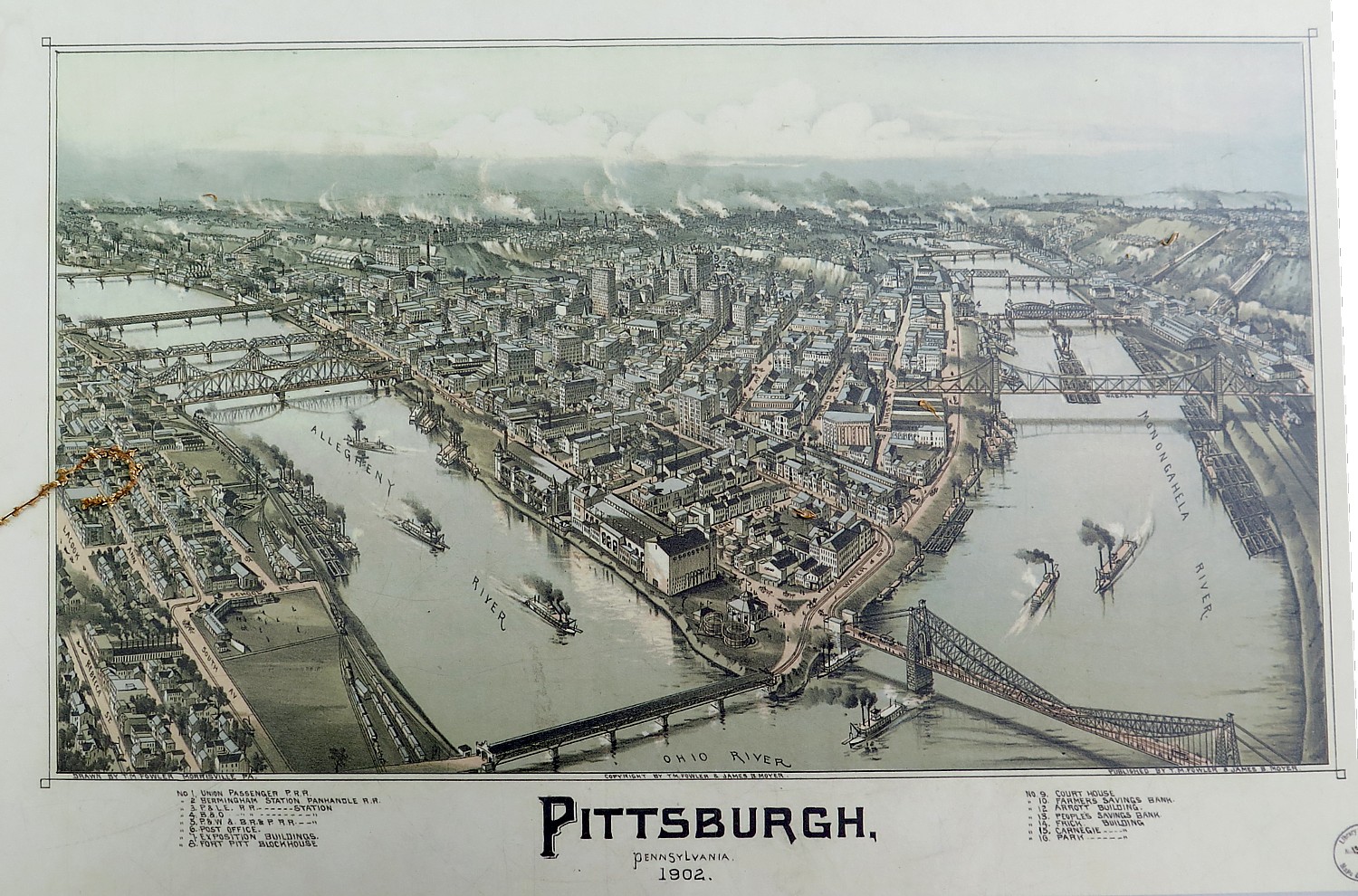
Mount Washington was once called Coal Hill, the spot where the nation’s coal industry was born around 1760. “Here the Pittsburgh coal bed was mined to supply Fort Pitt. This was eventually to be judged the most valuable individual mineral deposit in the U.S.”
Another marker: “With its steel mills belching fire and smoke, Boston writer James Parton described the city as ‘hell with the lid off.’ Streetlights were often needed in the middle of the day to combat the haze of industrial smoke and grime. As recently as the late 1940s, visitors to Grandview Avenue had to strain to see the skyline through the haze.” Today, despite the clouds casting a grey pallor, I can still see the striking skyscape, and follow the outline of the rivers a long distance.
I stroll the avenue toward the next incline, the Duquesne, passing lovely Victorian homes and a library.
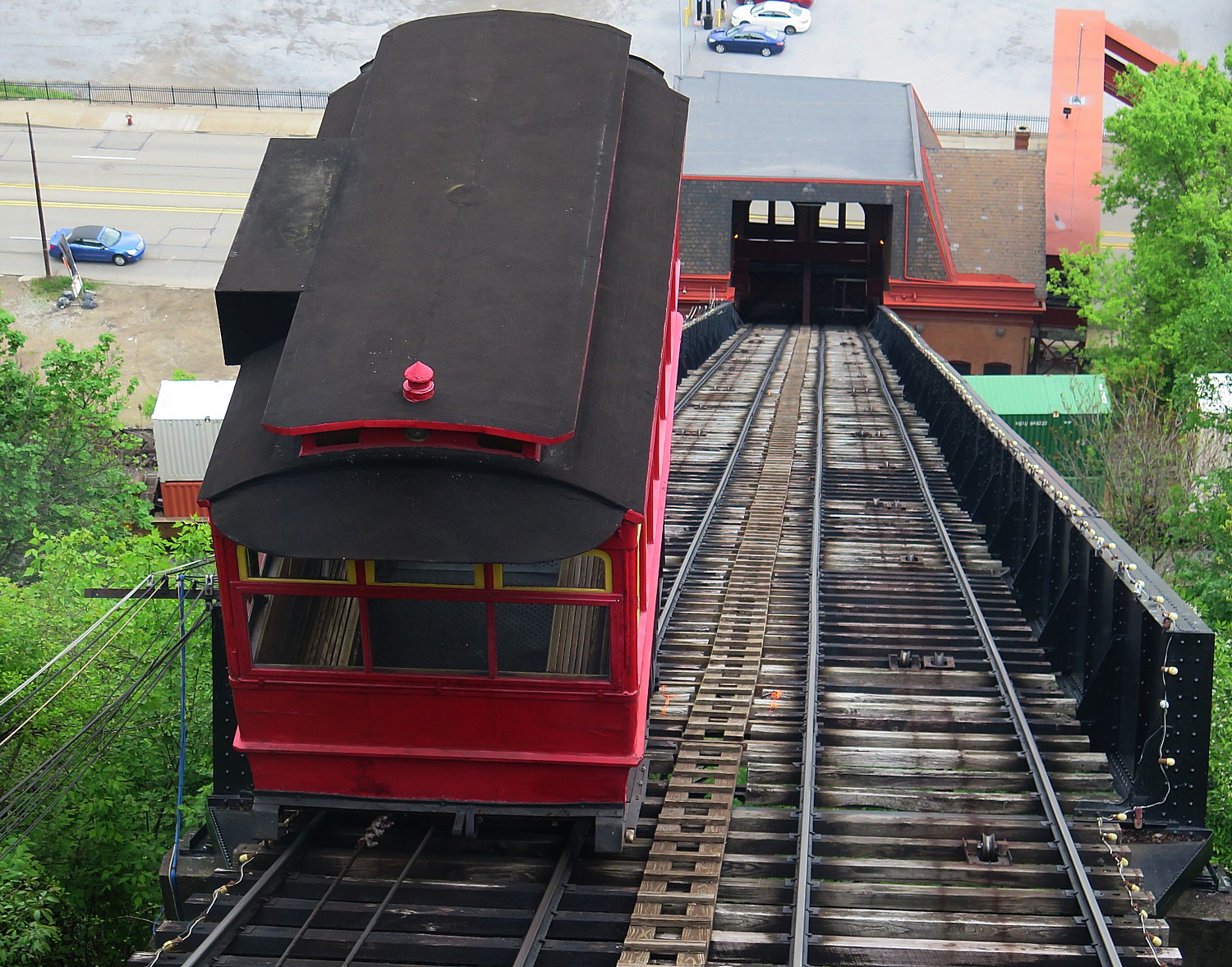
The Duquesne Incline opened in 1877 – it has quite an interesting display of historical photos and artifacts. It is operated by the Society for the Preservation of Duquesne Heights Incline. It travels the 793 length at a speed of 6 mph, bringing me back down to the riverfront and I walk across the Fort Pitt Bridge down into Point State Park.
For more information, contact Visit Pittsburgh, 412-281-7711, 800-359-0758, 877-LOVE PGH (568-3744), [email protected], www.visitpittsburgh.com.
Next: Pittsburgh Walking Tour Continues to Fort Pitt Museum
____________________
© 2016 Travel Features Syndicate, a division of Workstyles, Inc. All rights reserved. Visit goingplacesfarandnear.com and travelwritersmagazine.com/TravelFeaturesSyndicate/. Blogging at goingplacesnearandfar.wordpress.com and moralcompasstravel.info. Send comments or questions to [email protected]. Tweet @TravelFeatures. ‘Like’ us at facebook.com/NewsPhotoFeatures
